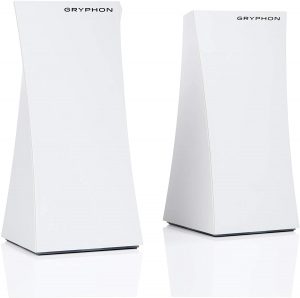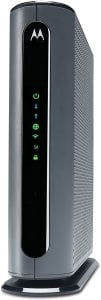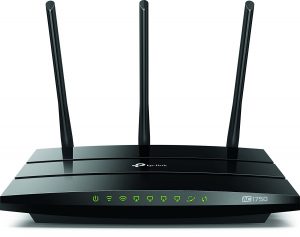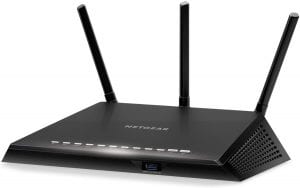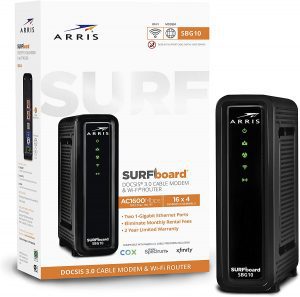The Best Wireless Router
We looked at the top 14 Wireless Routers and dug through the reviews from 24 of the most popular review sites including and more. The result is a ranking of the best Wireless Routers.
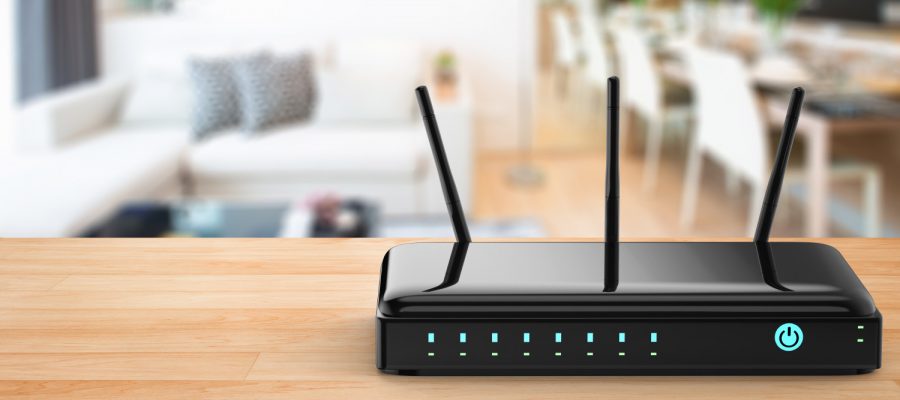
Our Review Process
Don't Waste Your Money is focused on helping you make the best purchasing decision. Our team of experts spends hundreds of hours analyzing, testing, and researching products so you don't have to. Learn more.
Our Picks For The Top Wireless Routers
Designed for larger homes, this wireless router is capable of covering a 6,000 square foot area. To use the unit, all you need to do is download the app, scan the QR code and then plug the router into your modem. Once set up, the router will provide a secure network for quickly connecting to the internet, whether for work or play.
Large Coverage AreaThis wireless router comes with parental controls for families with small children.
You can't go wrong with this wireless router, which comes with a built-in high-speed router and four ethernet ports. The modem's vertical design is great for anyone who lacks desk space. You'll find the modem has a 1,000 megabits per second maximum cable speed and a 1,900 megabits per second maximum Wi-Fi speed.
Built-In RouterThis wireless router is equipped with four ethernet ports.
This powerful router is compatible with Amazon's Alexa. Its dual-band technology allows you to upgrade your Wi-Fi to 1750Mbps, which is ideal for streaming your favorite TV shows. Three external antennas extend the signal even further.
Budget PickThis wireless router has the brawn of a powerful router with the brains of Amazon's Alexa.
This wireless router performs nearly as well in most practical matters as its much more expensive competitors. The set-up wizard takes much of the sting out of the upgrading process.
Affordable and EffectiveThis wireless router is easy to set up and affordable.
You'll find this wireless router actually does the work of three different devices. It serves as a cable modem, Wi-Fi router and Ethernet router. Although it isn't compatible with AT&T, it does work with most Internet service plans of up to 400 megabytes per second.
Most VersatileAfter downloading the company's app, you'll be able to set-up and manage this wireless router with ease.
Buying Guide
If ever an electronic device could be considered the brains of an operation, it would be the purpose-driven processor known as a wireless router. A wireless router functions as both the air traffic controller and communications center for multiple devices equipped with wireless capability. Because of the wireless router’s incredible ability to multitask, one user can browse the Internet on a laptop while another streams a movie or has a conversation over Skype.
The technology that makes this all possible involves the sending and receiving of small packets of data. Wireless routers spend their days chopping up information from one device into smaller pieces before sending it out to another device that reassembles it. It also determines which device receives the requested data, so a cellphone conversation doesn’t end up being transmitted through a laptop computer.
The good news for more casual users is that the original wireless router or router/modem combination the technician from the Internet service provider installed is perfectly capable of meeting most basic wireless demands. Some older models using the 802.11b protocol can still connect users to the Internet or stream a movie. The need to upgrade generally starts with a noticeable slowdown in performance or reliability, or sometimes a compatibility issue with a newer wireless-enabled device.
This is why many consumers find themselves shopping for a newer wireless router. The old router may be reaching the end of its natural lifespan or may no longer be compatible with a new laptop or cellular phone. Sometimes a family’s growing wireless needs can outgrow the current router’s capacity.
One major consideration when shopping for a new wireless router is compatibility. When a new wireless-enabled device is released to the market, the manufacturers usually select the most recent wireless router standard. If the standards are not compatible, the device simply will not work. Currently, the most common wireless standard is 802.11g or 802.11n, although the 802.11ac is growing in popularity.
When it comes to an upgrade, the emphasis should be on reliability and compatibility, not necessarily speed. Some wireless routers offer an incredibly fast 1900 megabits per second speed, which is great for dedicated gamers or families with major streaming, surfing and home controller needs. A more affordable model can meet basic demands without sacrificing much in the way of processing speed.
Ease of use is also an important consideration, especially for those who are technologically challenged. While the customer support department or a friendly technician may be able to walk customers through the original installation process, they may not be able to help with consumer-purchased upgrades. The better wireless router models offer a very helpful setup wizard that will configure most settings automatically.
Perhaps the most important consideration of all is price versus service. The highest-end wireless routers on the market today offer an astounding array of options, including tri-band frequency options, Gigabit processing speeds and compatibility with all previous 802.11 protocols. However, there are few devices on the market designed for tri-band level performance, and many users simply do not need that much power to meet their modest bandwidth demands. Consumers should only invest in as much wireless routing capacity as they actually need, not how much they may feel they want. Only serious gamers and cutting-edge device owners live in the rarefied air of tri-band, Gigabit performance.
Why we recommend these wireless routers?
Products Considered
Products Analyzed
Expert Reviews Included
User Opinions Analyzed
The Best Bang For Your Buck
TP-Link Archer A7 Integrated USB Wireless Router
Key Takeawy
This powerful router is compatible with Amazon's Alexa. Its dual-band technology allows you to upgrade your Wi-Fi to 1750Mbps, which is ideal for streaming your favorite TV shows. Three external antennas extend the signal even further.
What to Look For
- Overheating is a common reason why older wireless routers fail. Single-band Wi-Fi transmitters operate in the 2GHz range, which means they can generate almost as much heat as a microwave (2.4 GHz). Proper ventilation is essential, and a model with external antennae is actually preferable to the 2-in-1 wireless router/modem units many Internet service providers install for new customers.
- Wireless routers emit radio waves in a donut shape, so to increase overall coverage and performance, it often helps to orient one antenna vertically and another one horizontally.
- A wireless router’s effective range can be affected by any number of physical obstacles, including water pipes and electrical wiring inside the walls. The ideal location is in a centralized location, free of any obvious obstructions.
- The designation 802.11 is an industry standard, but it only tells half the story. The more important factor is the letters that follow. 802.11a and 802.11b routers are nearly obsolete, 802.11g routers are serviceable but increasingly limited, 802.11n models are the new standard, and 802.11ac is currently the most advanced. Some modern wireless devices are designed specifically for 802.11n or 802.11ac compatibility.
- Improving reliability is often a more important consideration than increasing processing speed. Investing in Wi-Fi extenders will often increase the range of a wireless router, but not affect the processing speed. Adding a second or even third router will often improve processing speed.
- While dual-band wireless routers do offer a faster 5GHz frequency, many common devices are currently not equipped for it. Home users with limited wireless connectivity requirements are often satisfied with single-band 2 GHz models, so an upgrade is not strictly required.
- Some microwave ovens can negatively affect the performance of wireless routers, which operate close to the same wavelength. This is more of an annoyance than an actual problem, however, similar to a vacuum cleaner creating static on a television set while in use.
- The term Wi-Fi doesn’t actually stand for “wireless fidelity.” In truth, Wi-Fi doesn’t actually stand for anything at all. It was created by a marketing company to replace the more accurate (but somewhat stodgy) designation IEEE 802.11b. Other early names included DragonFly, FlankSpeed and WaveLAN.
You May Also Enjoy Our Other Reviews
- Robotic Vacuum
- Cordless Vacuums
- Air Mattress
- Drone
- Electric Razor
- Convertible Car Seat
- Infant Car Seat
- Dry Dog Food
- Carpet Cleaners
- Air Fryers
- Laptops
- Home Printers
- Wireless Router
- Streaming Device
- Electric Pressure Cooker
- Chromebook
- Television
- Digital Camera To Capture Special Moments On The Fly
- Smartwatch
- Upright Vacuum


